In 2014 we bought a 40ha block of land adjacent to our house property, which is already in the Land for Wildlife program and primarily managed for conservation. We acquired the block with the intention of preserving the habitat, including the magnificent old trees, different ecosystems and the known populations of various ‘at risk’ fauna. So, we acquired a block of land we didn’t need, all the while wondering whether or not we had time and energy to care for it.
In 2016 we established a Nature Refuge agreement over the block and called it Mount Mellum West Nature Refuge. The agreement cites significant natural resources including:
- ‘Of concern’ Regional Ecosystems 12.9-10.16 (Hoop Pine vine forest on old soils) and 12.8.8 (Sydney Blue Gum, Eucalyptus saligna, &/or Flooded Gum, E. grandis, tall open forest on old igneous rocks).
- Known populations of threatened species including Koala, Richmond Birdwing butterfly and Giant Barred Frog
- Landscape connectivity with surrounding Nature Refuges and Environmental Reserves.
Six years on, we have done a lot of work with assistance from Sunshine Coast Council. We received support from neighbours, Hinterland Bushlinks and even from an Ecuadorian man missing his time in nature. This wonderful support partially answers our problem regarding energy and time for a second block.
In addition, the Queensland Government offers grants to Nature Refuge landholders. Projects must contribute to the ecological values of the Nature Refuge, be completed within six months and must be equally matched by the landholder, either in cash or in kind. That can be a lot of weed slashing/pulling/spraying, hole digging, tree planting, believe me. Thank goodness for the piggy bank and muscles.
We divided our major projects into three phases. Phase Zero happened back in 2015 with help from neighbours Paul and Melissa. Many a day was spent working with them, including one memorable day when they/we brushcut all the way downhill to London Creek on the logging track. Brushcutting an 800m track with a fall of 100m was quite a day’s work. (Thanks P&M.)
Phase One started in early 2019 and restored a track to enable vehicle access to the riparian zone on the northern end of the block where London Creek flows. It was overgrown with an infestation of weeds and practically inaccessible on the rutted-out old logging track.
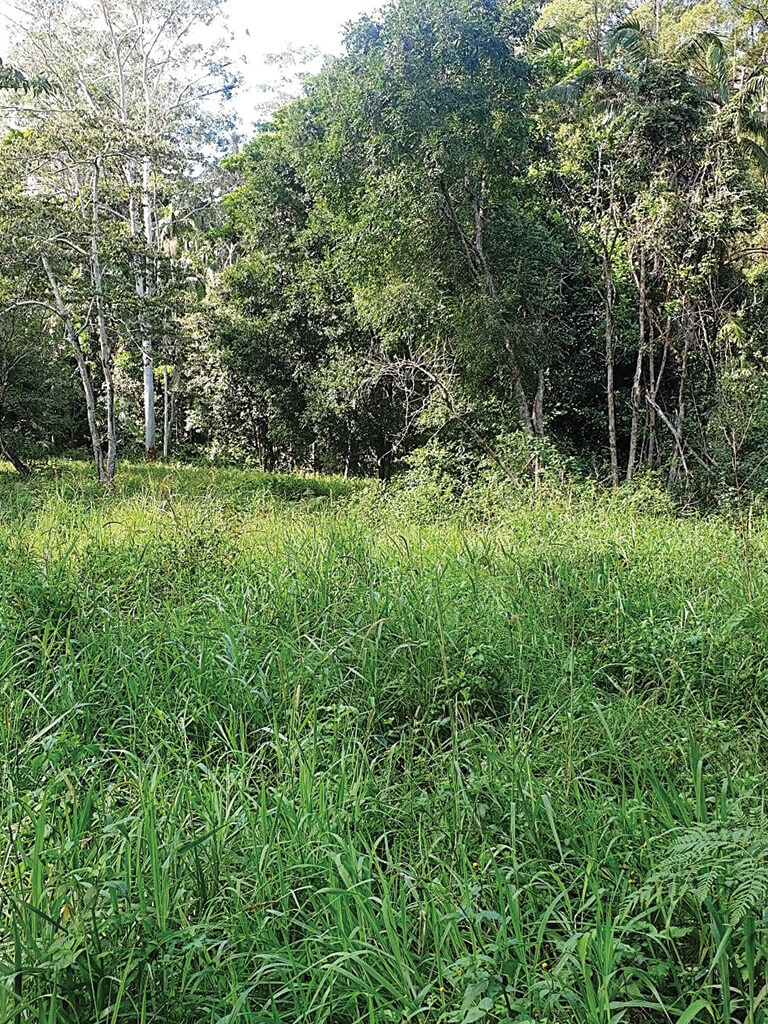
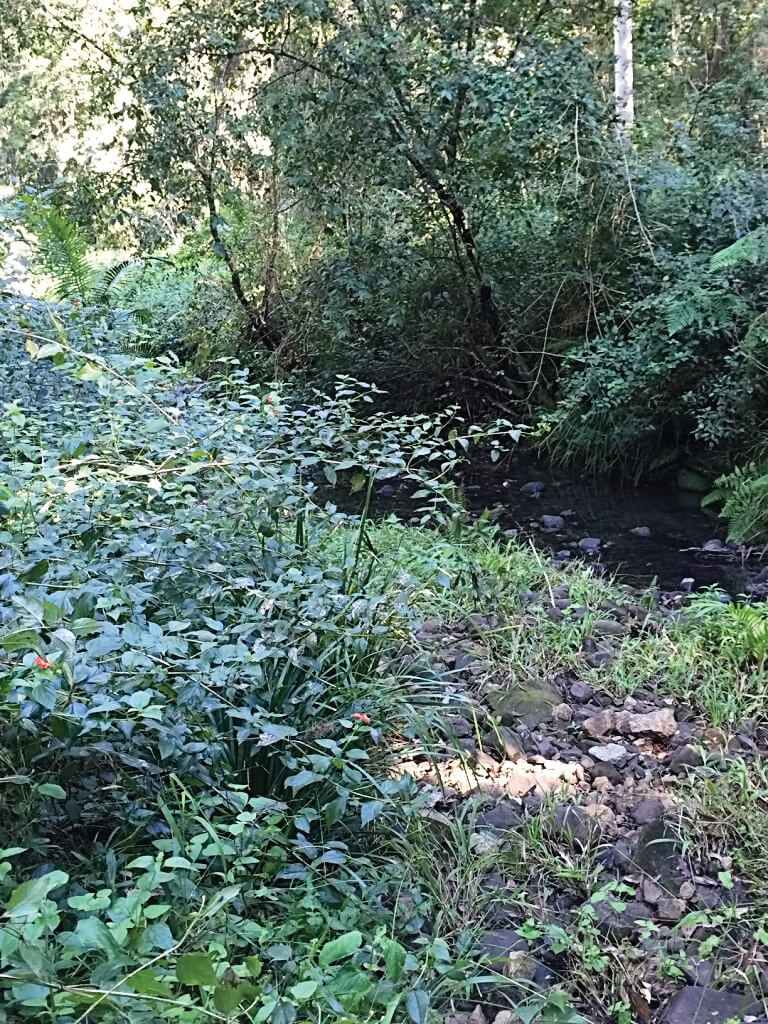
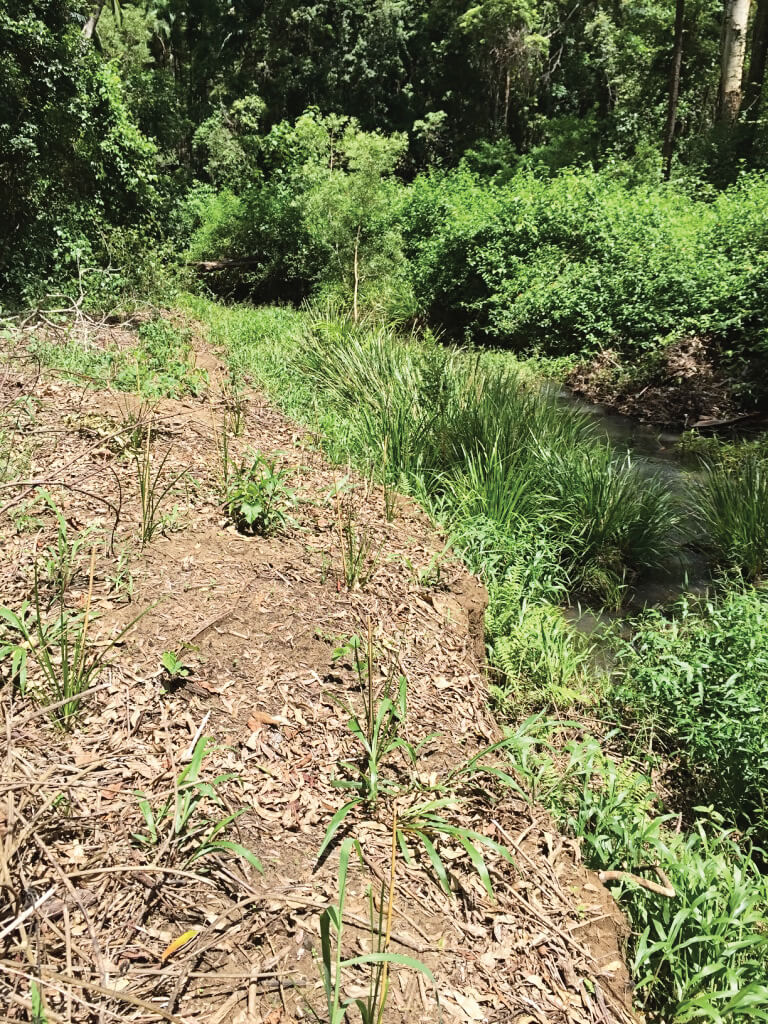
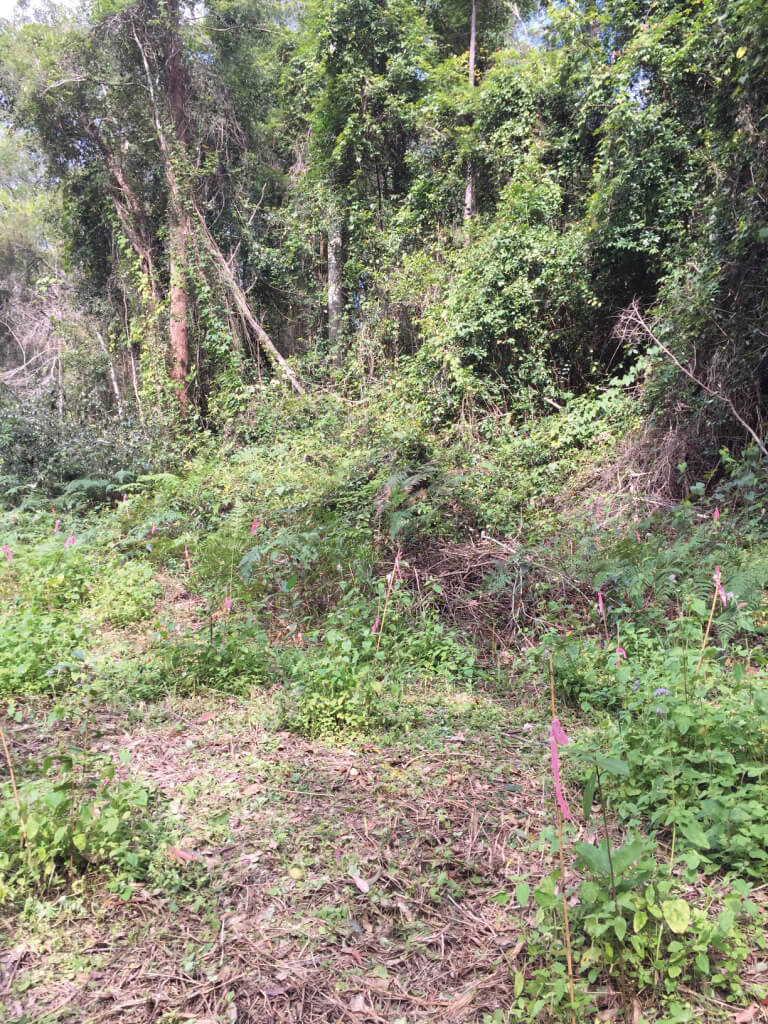
Phase Two ran from late 2019 to early 2020, during which we controlled Slash Pines using the drill-and-fill method, cleared Lantana, native raspberries, Setaria Grass and other invasive plants, and revegetated the area with suitable native pioneers and long-term desirables. The grant section of this project is now completed but maintenance work will continue for years.
Our learnings are many, including:
- Silky Cucumber (Trichosanthes subvelutina) has very large fruit (don’t stand under the vines!).
- Sometimes there are native seedlings in the weeds even when there are no stakes.
- Sometimes there aren’t seedlings in the weeds, even when there are stakes.
- Never underestimate the weed recovery rate – it is always faster than the seedling growth rate.
- Never overestimate your ability to work in the heat and humidity.
- Cobbler’s Peg seeds prefer the neck and ears to the socks.
- Enjoy every moment working in nature, and observe closely, as it will look very different within weeks.
- Take everything you need as it’s a long hike back to get any forgotten tools.
- To create good comparison photos, physically mark a point at the site to ensure the same perspective.
- Trust nature to run the process.
Article and photos by Christine McMaster
Land for Wildlife member
Mt Mellum, Sunshine Coast
View Full Newsletter

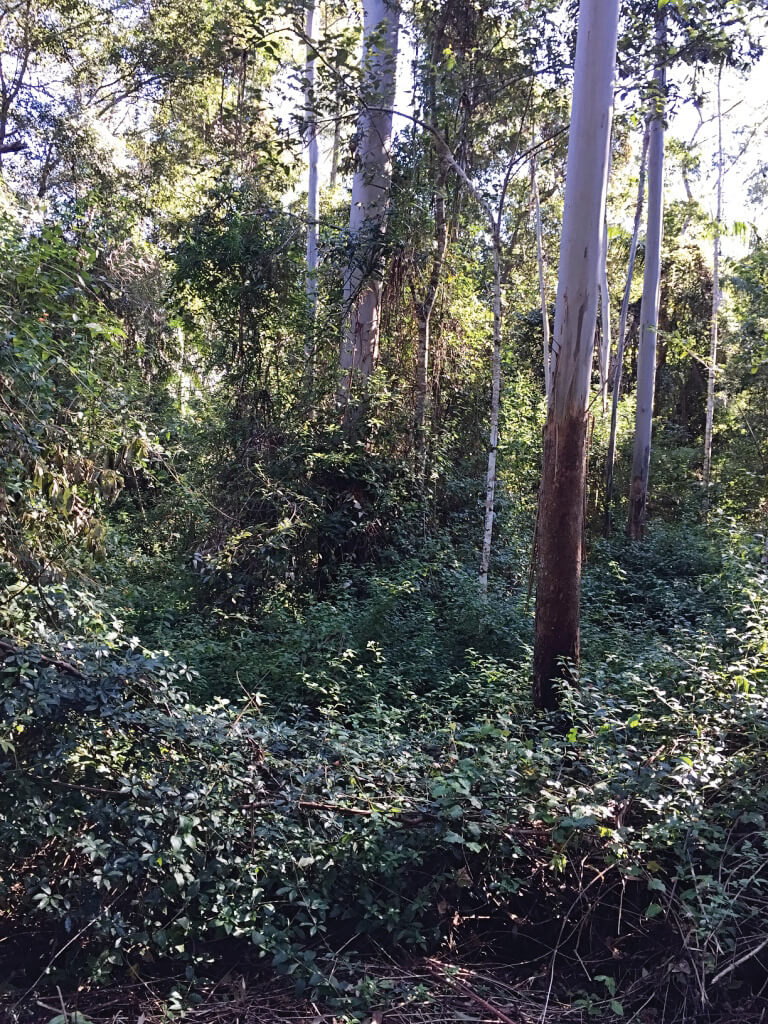
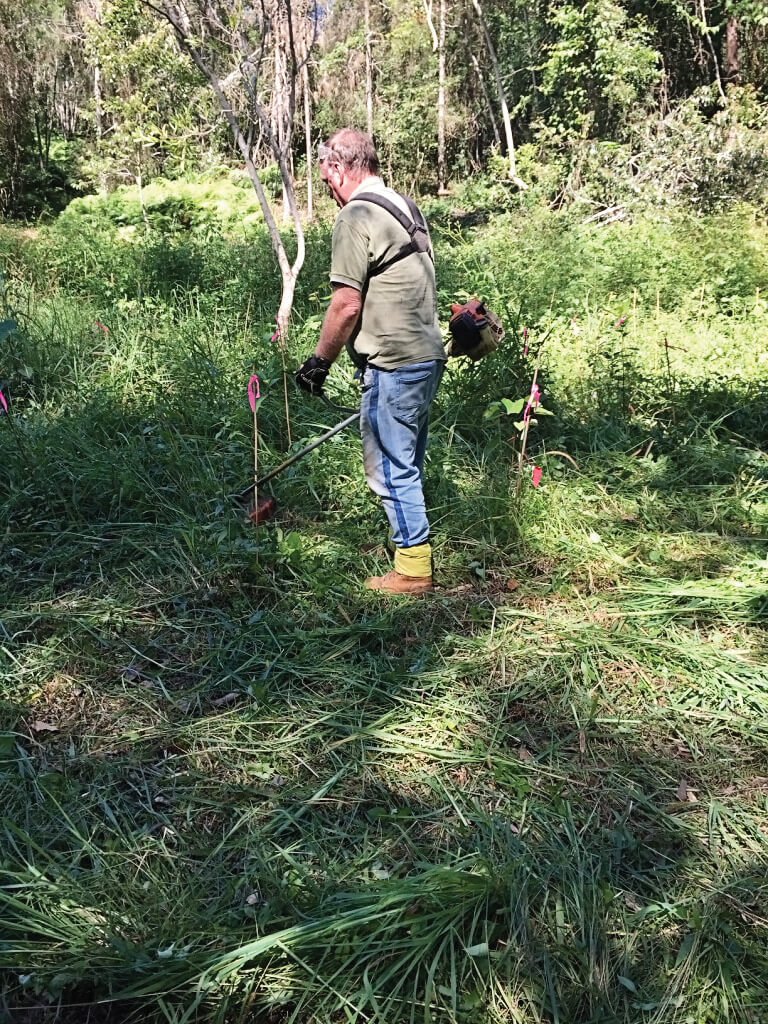
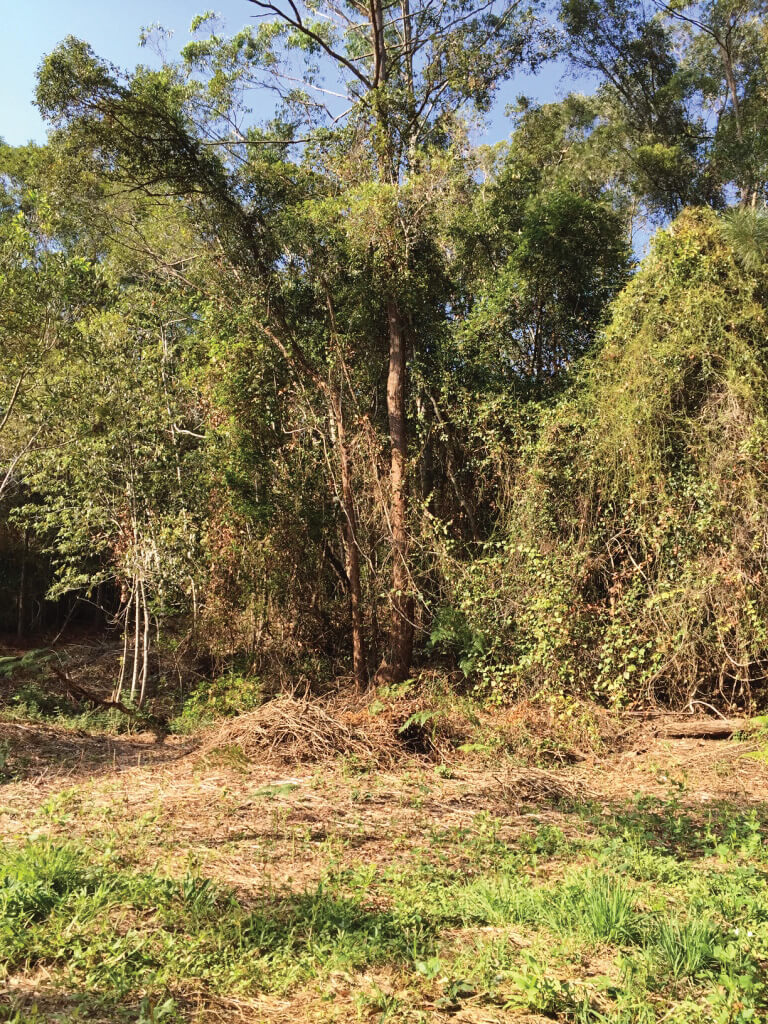
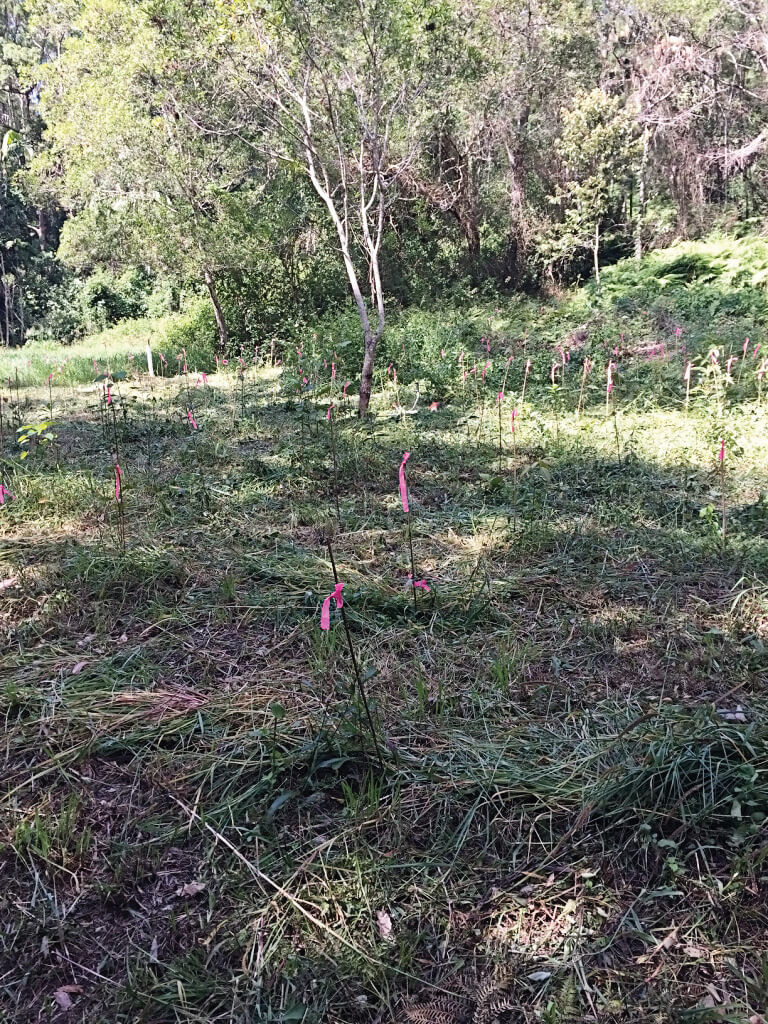
Fantastic work! Congrats.